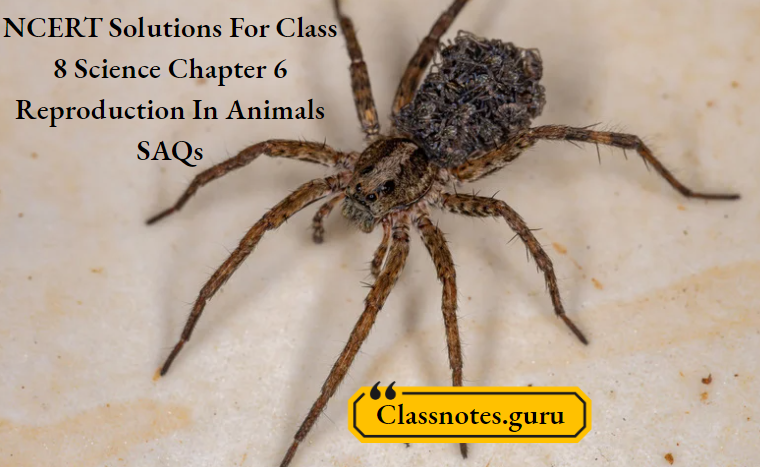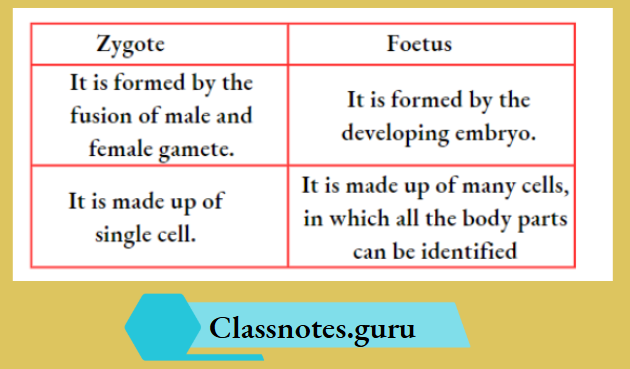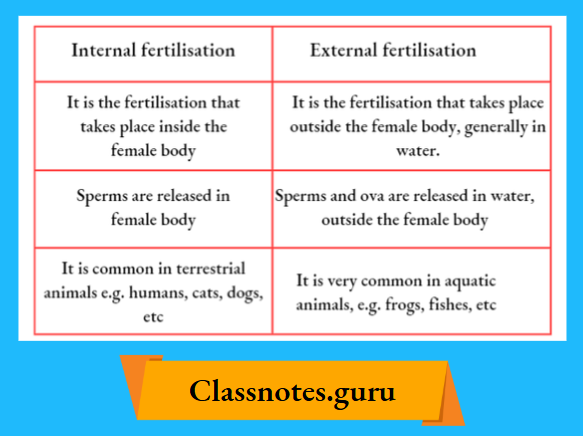NCERT Solutions For Class 8 Science Chapter 6 Reproduction In Animals Short Answer Questions

Question 1. How is reproduction in Hydra different from that in Amoeba?
Answer:
Both Hydra and Amoeba reproduce asexually, involving only, single parent, but the modes are different. As Hydra reproduces from bulges or buds arising from the parent body that grows and matures into another organism, Amoeba reproduces by forming two daughter cells by division of both nucleus and cytoplasm through binary fission.
Question 2. Why do fish and frogs lay eggs in hundreds, whereas a hen lays only one egg at a time?
Answer:
Fish and frog lay eggs in hundreds in number whereas a hen lays only one egg at a time because fish and frog undergo external fertilisation, and a hen undergoes internal fertilisation.
In the case of fish and frogs, the gametes are released in water, and many of them may be carried away by the movement of water, wind, etc., or may be eaten by other aquatic animals. So, to enhance the chances of fertilisation, a large number of eggs are released by them.
NCERT Class 8 Science Chapter 6 Reproduction in Animals SAQs
Question 3. Explain the importance of reproduction in organisms.
Answer:
Reproduction helps in the production of new individuals of the same kind and the transmission of certain characteristics from parents to offspring.
Question 4. Describe the process of fertilisation in human beings.
Answer:
In human beings, fertilisation takes place inside the female body.
It is the fusion of a male and female gamete, i.e., sperm and an ovum. It is the first stage in the process of reproduction.
During fertilisation, the nuclei of the egg and sperm fuse to form a single nucleus. This results in the formation of a fertilised egg or zygote.
Question 5. Choose the most appropriate answer.
- Internal fertilisation occurs
- In the female body
- Outside female body
- In the male body
- Outside the male body
Answer: 1. Internal fertilisation occurs in the female body
![]()
Question 6. A tadpole develops into an adult frog by the process of
- Fertilisation
- Metamorphosis
- Embedding
- Budding
Answer: The process of development of a tadpole into an adult frog is known as metamorphosis.
NCERT Solutions for Reproduction in Animals Chapter 6
Question 7. The number of nuclei present in a zygote is
- None
- One
- Two
- Four
Answer:
In a zygote, only one nucleus is present, which is formed by the fusion of two nuclei, one from each parent.
Question 8. Give two differences between a zygote and a foetus.
Answer:
The Difference between a zygote and a foetus is as follows

Question 9. In which female reproductive organ does the embryo get embedded?
Answer:
An Embryo gets embedded in the uterus of a female for further development.
SAQs for Reproduction in Animals Chapter 6 Class 8
Question 10. Differentiate between internal fertilisation and external fertilisation.
Answer:
The differences between internal fertilisation and external fertilisation are as follows-

